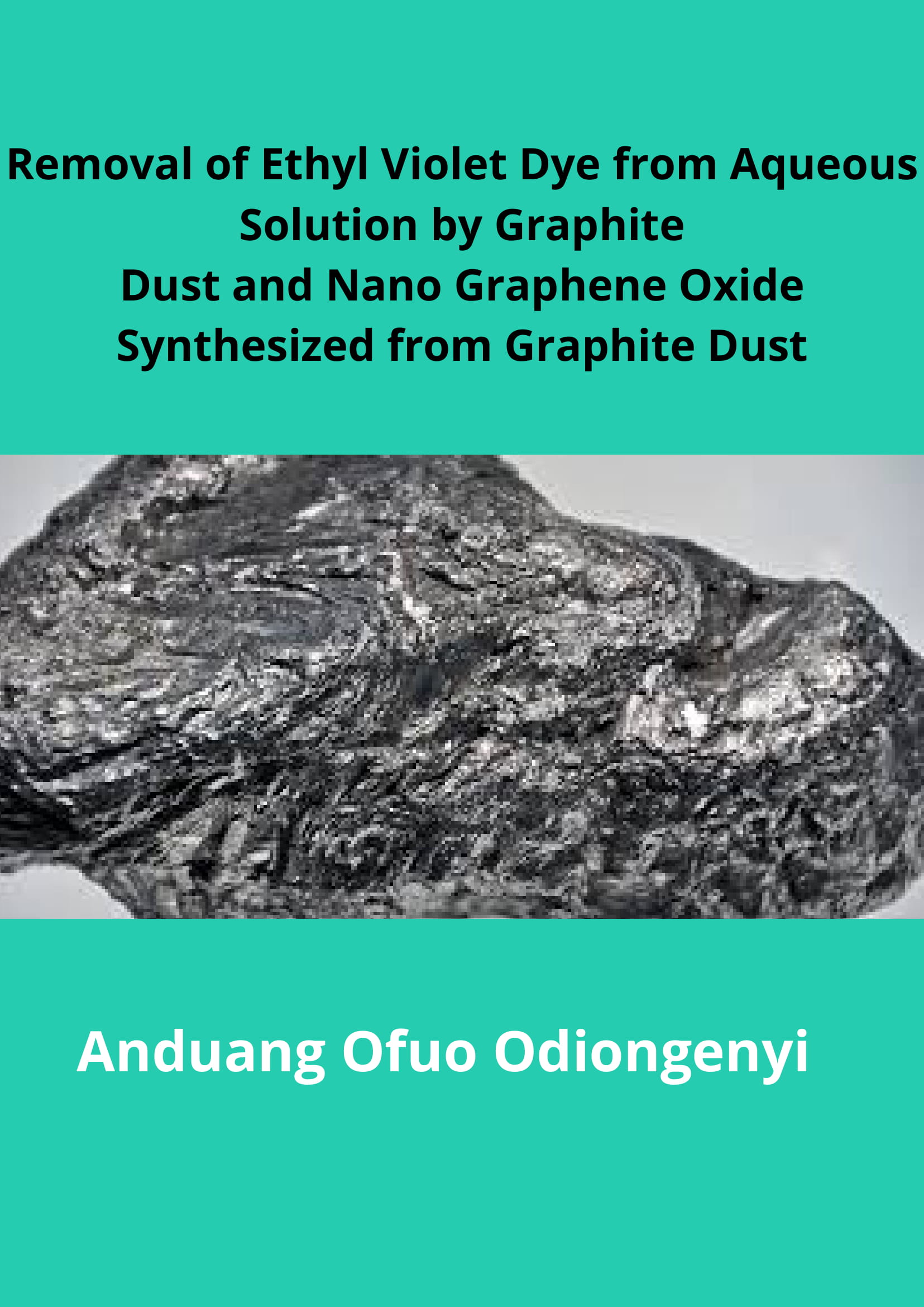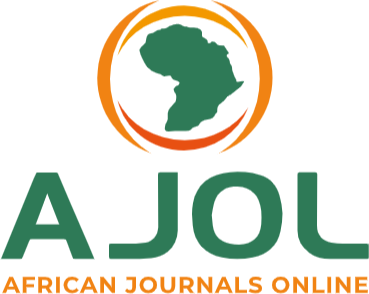Removal of Ethyl Violet Dye from Aqueous Solution by Graphite Dust and Nano Graphene Oxide Synthesized from Graphite Dust
Keywords:
Decontamination, colour, adsorption, graphite dust, nano graphene oxideAbstract
Communication in Physical Sciences 2019. 4(2): 103-109
Author: Anduang Ofuo Odiongenyi
Nano graphene oxide was synthesized from graphite dust using Hummer’s method. The graphite dust and the synthesized nano graphene oxide were used as an adsorbent to remove ethyl violet dye from aqueous solution. The equilibrium amount of dye adsorbed by graphite dust at 303, 313, 323 and 333 K ranged from 5.303 to 37.236, 1.551 to 22.779, 1.058 to 26.026 and from 1.298 to 22.849 mg/g respectively. For nano graphene dust, the equilibrium amount ranged from 1.904 to 41.467, 1.834 to 55.712, 1.058 to 26.023 and from 1.298 to 22.849 mg/g at 303, 313, 323 and 333 K respectively. Nano graphene oxide exhibited better performance than graphite dust except at 333 K. The adsorption of ethyl violet occurred through a physical adsorption mechanism at 303 K but at higher temperature, chemisorption dominated, Langmuir isotherm best described the adsorption of the dye. The theoretical adsorption capacity of the
adsorbent increased with temperature. Nano graphene oxide displayed better surface modification properties than graphite dust.

Downloads
Published
Issue
Section
Most read articles by the same author(s)
- Anduang Ofuo Odiongenyi, Influence of Sol Gel Conversion on the Adsorption Capacity of Crab Shell for the Removal of Crystal Violet from Aqueous Solution , Communication In Physical Sciences: Vol. 8 No. 1 (2022): VOLUME 8 ISSUE 1
- Anduang Ofuo Odiongenyi, Adsorption Efficiency of Scotch Bonnet Shells as a Precursor for Calcium Oxide Nanoparticles and an Adsorbent for the Removal of Amoxicillin from Aqueous Solution , Communication In Physical Sciences: Vol. 9 No. 3 (2023): VOLUME 9 ISSUE 3
Similar Articles
- Nsikak Bassey Essien, Chukwu Obaji Daniel, Raphael Mmenyene Paul, Synthesis and characterization of Silicon Oxide Nanoparticles using Plantain Peel as a Precursor , Communication In Physical Sciences: Vol. 11 No. 1 (2024): VOLUME 11 ISSUE 1
- Femi Emmanuel Awe, Muhammad Dahiru Faruruwa, Hadiza Abba, Green Synthesis, Characterization and Antibacterial Activity of Zinc Oxide and Titanium Dioxide Nanoparticles Using Terminalia Catappa and Cymbopogon Citratus Leaf Extract , Communication In Physical Sciences: Vol. 7 No. 4 (2021): VOLUME 7 ISSUE 4
- Kantoma, D.,, Green Synthesis of Silver nanoparticlesNanoparticles(AgNPs) using Calotropis procera leaves Leaves extract Extract and it adsorption Adsorption properties Properties for the removal Removal Chromium(III) ion. of Cr3+ from Petroleum Waste Water , Communication In Physical Sciences: Vol. 11 No. 1 (2024): VOLUME 11 ISSUE 1
- Nwokem, Calvin Onyedika, Kantoma, Dogara , Zakka Israila Yashim , Zaharaddeen Nasiru Garba, Kinetic and Thermodynamic Studies on Adsorption of Pb2+ and Cr3+ from Petroleum Refinery Wastewater using Linde Type a Zeolite Nanoparticle. , Communication In Physical Sciences: Vol. 10 No. 3 (2023): VOLUME 10 ISSUE 3 (2023-2024)
- Abdulfatai A. Otori, Akeem A. Jimoh, John T. Mathew, Development of Heterogeneous Catalyst from Waste Cow Bone Using Parinarium Macrophylum Seed Oil for Biodiesel Production , Communication In Physical Sciences: Vol. 7 No. 3 (2021): VOLUME 7 ISSUE 3
- Kantoma, Dogara , Nwokem, Calvin Onyedika, Zakka Israila Yashim, Zaharaddeen Nasiru Garba, Green Synthesis of Silver Nanoparticles(AgNPs) using Calotropis procera Leaves Extract and it Adsorption Properties for the Removal of Cr3+ from Petroleum Waste Water , Communication In Physical Sciences: Vol. 10 No. 3 (2023): VOLUME 10 ISSUE 3 (2023-2024)
- Irene Edem Johncross, Fanifosi Seyi Josiah, Abidemi Obatoyinbo Ajayi, Resource recovery from Sugar Cane Biomass for the Synthesis of Silicon Nanoparticles , Communication In Physical Sciences: Vol. 12 No. 1 (2024): VOLUME 12 ISSUE 1
- Aniekan Udongwo, Oluwafisayomi Folorunso, Resource Recovery from Maize Biomass for the Synthesis of SiO2 Nanoparticles and Crystallographic Analysis for Possible Applications , Communication In Physical Sciences: Vol. 12 No. 2 (2025): VOLUME 12 ISSUE 2
- Chigbundu C. Emmanuel, Adebowale O. Kayode, Equilibrium and Kinetics Studies of the Adsorption of Basic Dyes onto PVOH Facilely Intercalated Kaolinite - A Comparative Study of Adsorption Efficiency , Communication In Physical Sciences: Vol. 7 No. 4 (2021): VOLUME 7 ISSUE 4
- Helen O. Chukwuemeka-okorie, Ifeanyi Otukere, Kovo Akpomie, Isotherm, Kinetic and thermodynamic investigation on the biosorptive removal of Pb (II) ion from solution onto biochar prepared from breadfruit seed hull , Communication In Physical Sciences: Vol. 12 No. 3 (2025): VOLUME 12 ISSUE 3
You may also start an advanced similarity search for this article.



